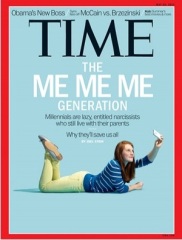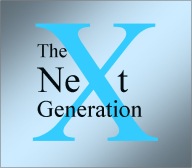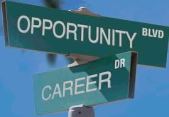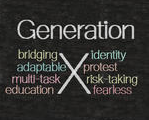There are lots of articles, blog posts and studies centred on the millennial generation. Born between 1980-2000; Millennials comprise about 29% of the current workforce, just shy of Gen X at 33% (1965-1979) and Baby Boomers representing 38% (1946- 1964)1 . This has resulted in a more even distribution of multiple generations in the workforce.
 Even though Millennials have been labelled as needy and narcissistic their entry into the workforce has had a significant impact in helping change the way organizations communicate and approach work. First, their reliance on technology, in particular mobile, has pushed the envelope to adopt more mobile friendly solutions at work. Things like approving transactions (e.g. registering for an on-line course) on mobile devices, IM’ing (texting) and adding apps on phones are all current technology interactions Millennials are accustomed to.
Even though Millennials have been labelled as needy and narcissistic their entry into the workforce has had a significant impact in helping change the way organizations communicate and approach work. First, their reliance on technology, in particular mobile, has pushed the envelope to adopt more mobile friendly solutions at work. Things like approving transactions (e.g. registering for an on-line course) on mobile devices, IM’ing (texting) and adding apps on phones are all current technology interactions Millennials are accustomed to.
Second, the daily use of social networking channels to facilitate engagement and collaboration. Facebook, Pinterest, Instagram, Twitter, LinkedIn, Google+, Tumblr, etc., are all various social platforms Millennials use to interact, convey information and build networks. Their ease of use and navigation on these channels has challenged their older counter parts to get with the times and use these as relevant ways to communicate and interact. Millennials assume employers use these tools as forums to engage with employees and customers, solicit feedback, build networks and work across functional teams.
Third, the erosion of traditional hierarchies. Unlike Baby Boomers who work within a disciplined hierarchical structure,  Millennials approach collaboration in a broad, encompassing manner. They have no problem booking a meeting with a VP (bypassing the chain of command) to help them better understand issues or network. This approach is challenging traditional authoritative hierarchical structures in the workplace. For Gen Xers who have been molded to abide by current hierarchical protocol, they may feel liberated by this new approach and at the same time overshadowed by the Millennials ability to effect change so quickly.
Millennials approach collaboration in a broad, encompassing manner. They have no problem booking a meeting with a VP (bypassing the chain of command) to help them better understand issues or network. This approach is challenging traditional authoritative hierarchical structures in the workplace. For Gen Xers who have been molded to abide by current hierarchical protocol, they may feel liberated by this new approach and at the same time overshadowed by the Millennials ability to effect change so quickly.
As much as Millennials have helped push the broad adoption of social media in the workplace, in my opinion I think Gen Xers were really the first generation to embrace technology and gamification on a mass scale. The consumption of technologies for personal use such as PC’s (personal computer), Sony Walkman’s, cell phones, Nintendo game consoles, CD players, etc. were all widely adopted and embraced by Gen X. The development and availability of different forms of content such as videos’ and the internet laid the foundation for eCommerce and digital marketing.
In the current landscape Gen Xers are now sandwiched between soon to be retiring Baby Boomers and the masses of Millennials continuing to en ter the workforce.2 Gen Xers have been in the workplace for almost 20 years, accumulating a variety of experiences and building their skill set. For them retention is centered on flexibility, career and skill development and of course career progression. They are focused on carving out a career and will work through a variety of different jobs to build skills to keep their career moving forward. The acquisition of new skills and experiences can be viewed as a form of “career security” where skills and experiences are portable from one job to another3. Gen Xers are described as a highly motivated and tenacious generation. Their general attitude is if we don’t like it, we’re out of here.
ter the workforce.2 Gen Xers have been in the workplace for almost 20 years, accumulating a variety of experiences and building their skill set. For them retention is centered on flexibility, career and skill development and of course career progression. They are focused on carving out a career and will work through a variety of different jobs to build skills to keep their career moving forward. The acquisition of new skills and experiences can be viewed as a form of “career security” where skills and experiences are portable from one job to another3. Gen Xers are described as a highly motivated and tenacious generation. Their general attitude is if we don’t like it, we’re out of here.
It is estimated by the year 2020 approximately 33 million jobs will open up in the US as Baby Boomers start to retire4 . In Canada that number is  approximately 9.8 million5. Organizations need to develop a holistic human capital plan to mitigate the risk of losing Gen Xers who may not feel like they have opportunities to progress or move in their careers. Baby Boomers in positions of management will also need to adjust their approach to managing across generations to retain talent. Both Millennials and Gen Xers who find themselves working in a rigid hierarchical structure may seek out other environments that are more collaborative and empowering. Here are few things organizations need to consider in human capital planning to retain Gen Xers:
approximately 9.8 million5. Organizations need to develop a holistic human capital plan to mitigate the risk of losing Gen Xers who may not feel like they have opportunities to progress or move in their careers. Baby Boomers in positions of management will also need to adjust their approach to managing across generations to retain talent. Both Millennials and Gen Xers who find themselves working in a rigid hierarchical structure may seek out other environments that are more collaborative and empowering. Here are few things organizations need to consider in human capital planning to retain Gen Xers:
- Don’t favour Millennials at the expense of Gen Xers– Your Gen Xers have 20+ years of experience under their belt. They have worked through different jobs to amass skills and gain experience. Consider what Gen Xers bring to the table. Forward thinking, technically savvy people who embrace new ideas coupled with solid experience will yield your company good leaders who can think strategically.
- Have serious conversations about career progression – I’ve had a number of friends leave organizations due to lack of career advancement opportunities. Discussions about progression are important to Gen Xers at this stage of their career. They’ve put in the time and want to see there is some pay off for their hard work. Gen Xers expect to start having serious conversations about their next position and how management will help them get there. If they don’t feel there is a genuine commitment they’ll look for an employer who values them.
- Be inclusionary– Does your organization create an environment where your Gen Xers and Millennials are sitting at the table to provide input and strategic insight? Gen Xers want to feel they are valued in the organization and want be included in discussions where they can contribute their insights and expertise. Millennials want an opportunity to learn from their counterparts in a collaborative way. If your organization deems Baby Boomers as the only qualified group to be involved in strategic planning and decision making you will not only find yourself at a competitive disadvantage, but quickly find some of your talent (Gen Xers and Millennials) going to other companies who value their insight and observations.

Gen X’ers are valuable assets to your organization. Don’t take them for granted!
By Ann Barrett, Director eRecruitment & Social Media Strategy
1. [http://brighterlife.ca/2012/07/19/bridging-the-gap-in-multi-generational-teams/]
2. [http://www.destinationcrm.com/Articles/Editorial/Magazine-Features/Gen-X–Stuck-in-the-Middle-79865.aspx]
3. [http://www.examiner.com/article/keys-to-the-retention-of-generation-x]
4. [http://ebn.benefitnews.com/news/hispanic-jobs-baby-boomers-health-2721781-1.html]
5. [http://beyondrewards.ca/Articles/Art10-05.html]
